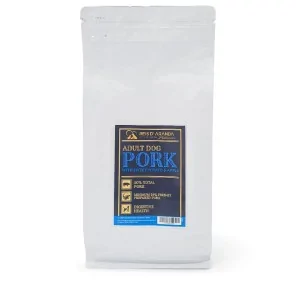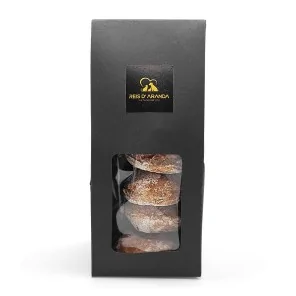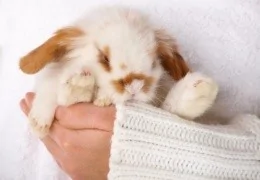The Tornjak originated from genetically homogeneous, almost extinct, indigenous shepherd dogs. These dogs have...
THE MASTIFF
INTRODUCTION
It is one of the oldest breeds and references to English Mastiff type dogs in the United Kingdom date back to pre-Roman times. The Roman conquerors adopted them for use as gladiators in the amphitheatres of the time.
THE ORIGIN OF THE MASTIFF
The Mastiff is among the oldest breeds of dog and many others are derived from it. Dogs similar to the Mastiff were highly prized by the Babylonians more than 4,000 years ago, and were already established in Britain from the time of Julius Caesar. Its nationality is British but it is originally descended from the Tibetan Mastiff introduced into Europe by the Phoenician civilisation in the 6th century BC. Drawings and reliefs have been found with the characteristics of the breed dating back to 2000 BC.
In the past it was often used as a fighting dog in circuses and battles. Then as a guardian of herds and farms against bears and large animals.
In the 1800's the English brought it to North America, where it quickly gained prestige for its strength and courage.
The history of the Mastiff has its most romantic and beautiful reference in the line of ‘Lyme Hall’ which was born with a bitch belonging to Sir Pearce Leigh, whom he accompanied on French soil during the battle of Agincourt, held on the 25th October 1415.
Seriously wounded, Sir Pearce was protected and cared for by the bitch until he was taken to Paris by his friends, where he died. His body was sent to England along with the bitch and the puppies she had given birth to.
Sir Pearce's descendants continued to breed this line of dogs for centuries at Lyme Hall Manor until the outbreak of World War I in 1914.
The O.E.M.C. (Old English Mastiff Club), Britain's dedicated breed club, was founded in 1883 as one of the pioneers and has been in existence for over a hundred years.
The Mastiff as we know it today is the product of breeding during the 19th century (The Mastiff and Bullmastiff Hand Book, 1988).
It is now used as a guard dog, self-defence and family companion.
THE MASTIFF STANDARD
GENERAL APPEARANCE: Viewed from any angle, the head appears well square in outline. Width is a sought after characteristic and the width of the skull is equal to two thirds of the total length of the head.
The body is broad, tall, long and strongly built. The limbs are set wide apart and in poise. The musculature is clearly defined.
The size is very desirable, but only if it is on a par with the quality of construction and correctness is maintained at all. Height and substance are two important points if correctly combined. Big, powerful, well built.
IMPORTANT PROPORTIONS: Length of body from point of shoulder to point of buttock is greater than height at withers.
HEAD
CRANIAL REGION:
SKULL: The skull is broad between the ears. The forehead is smooth but wrinkles when the dog is at attention. The eyebrows (supra-orbital arches) are slightly raised. The temporal and masseter muscles are well developed. The transverse profile of the skull describes an arch. From the middle area between the eyes a depression runs up the centre of the forehead and extends to the middle of the skull, following the sagittal axis.
STOP: Stop between the eyes well marked but not abrupt.
FACIAL REGION:
TRUFA: Black. The nose, when viewed from the front, is broad, offering wide open nostrils, and when viewed in profile, it is flat (neither pointed nor receding).
HOCICO: The muzzle is short, broad between the eyes, remaining broad as far as the end of the nose.
The muzzle is truncated, i.e. cut in a square, its front face forming a right angle to the upper line of the muzzle, having a large width from the upper front edge to the lower jaw. The length of the muzzle is equal to one third of the total length of the head. The circumference of the muzzle, measured at the midpoint between the eyes and the nose, represents three fifths of the head, measured in front of the ears. When at rest, any exaggeration of folds or excess of skin is unacceptable in adult dogs.
LIPS: The lips are divergent, forming an obtuse angle in relation to the nasal septum. They are slightly pendulous to give a square profile.
JAWS / TEETH: The lower jaw is broad to the end. Canines sound, powerful and well separated. Incisors level (pincer bite, edge to edge) or projecting lower in front of upper teeth (reverse scissor bite) but never so much that they are visible when mouth is closed.
CHEEKS: Muscles of the temporal masseters and cheeks well developed.
EYES: Moderate size, set wide apart. Eyes of hazel colour, as dark as possible. Conjunctivae not visible. Loose eyelids highly undesirable. Free from obvious eye problems.
EARS: Small, fine to the touch, set wide apart.
Set high on the sides of the skull, extending the transverse upper profile. In repose, they are set flat adjacent to the cheeks.
NECK: Slightly arched profile, of medium length, very muscular. Its circumference is less than 2.5 to 5 cm from the head, measured in front of the ears.
BODY
UPPER LINE: Level.
BACK: Broad and muscular.
LOIN: Broad and muscular, flat and very broad in bitches, slightly arched in males.
CHEST: Chest broad, deep and well let down in the sternal region. The ribs are well sprung and well rounded. The false ribs are long and well developed towards the back of the chest.
BOTTOM LINE AND BELLY: Flanks well let down.
TAIL: Set on high, reaching down to the hocks or a little lower. Broad at the root, tapering towards the tip. Hanging straight at rest, but curved in action, the end straightening, but never carried over the back.
LIMBS
FOREQUARTERS:
GENERAL APPEARANCE: Balanced and in harmony with the hindquarters.
Shoulders: Slightly sloping, powerful and very muscular.
ARM: Slightly sloping, heavy and muscular.
ELBOWS: The elbows are in the axis of the body.
FOREARMS: Strong, straight limbs set wide apart, large boned.
Pasterns: Set square.
HANDS: Large, round and tight. Fingers well arched. Nails black.
HIND LIMBS:
GENERAL APPEARANCE: Very broad and muscular. Strength in the hindquarters is of paramount importance, cow hocks in adult dogs are unacceptable.
LEGS: Well developed.
HINDQUARTERS: Hocks angulated, well laid back and always poised both in station and in movement.
FEET: Large, round and tight. Toes well arched. Nails black.
GAIT / MOVEMENT: Powerful with easy extension of the limbs. Thrust from the rear, fluid, correct, strides covering the surface. The topline remains level throughout the movement. Tendency to pastern is undesirable. Absolute correctness is essential.
COAT
HAIR: Short and flat on body. But harsh on neck and shoulders.
COLOUR: Fawn, apricot or brindle. In all cases the muzzle, ears and nose should be black and the eyes should be surrounded by black extending upwards. Excessive white on body, chest or feet is unacceptable.
FAULTS: Any departure from the foregoing points should be considered a fault and the seriousness with which the fault should be regarded should be in exact proportion to its degree and its effect upon the health and welfare of the dog.
DISQUALIFYING FAULTS:
- Aggressiveness or extreme shyness.
- Any dog showing clear signs of physical or behavioural abnormalities.
N.B.:
Male dogs should have two apparently normal appearing testicles fully descended into the scrotum.
Only functionally and clinically healthy dogs of typical breed conformation should be used for breeding.
MASTIFF HEALTH
The average lifespan of the Mastiff is approximately 7-9 years, although it is not uncommon for some to live 10-11 years. The main health problems of a Mastiff are hip dysplasia and gastric torsion. Other health problems include obesity, osteosarcoma and cystinuria. Problems only occasionally encountered include cardiomyopathy, allergies, vaginal hyperplasia, cruciate ligament rupture, hypothyroidism, OCD, entropion, progressive retinal atrophy (PRA) and multifocal retinopathy (MRC) and degenerative myelopathy (DM). When purchasing a purebred Mastiff, it is suggested that the dog be tested for hip and elbow dysplasia, thyroid, PRA, CMR and DM.
The Mastiff will need at least an hour of exercise daily, although he tends to become a little lazy and enjoy pleasant naps in any warm, comfortable place. He should not be over-exercised when young, as this breed is prone to bone problems, which can be aggravated by muscle tears and sprains in growing dogs.
WHAT IS THE MASTIFF LIKE AS A PET?
The Mastiff breed is a combination of grandeur, dignity, and courage; calm and affectionate towards its owner, but capable of protection. It is a well-mannered pet but needs plenty of room to stretch its long body. It is an extremely loyal and faithful breed to its family and very good with children. It can, however, be very zealous in protecting its owners and should be handled sensibly, as it is exceptionally powerful. When an unknown visitor enters the home, the Mastiff will stand between his owner and the visitor until his owner has acknowledged the visitor in a way that shows compassion or appears friendly.
CONCLUSION
Although not always aware of its power, the Mastiff should be trained with firmness and benevolence from an early age. A gentle and positive approach is recommended for best results.
Education should include learning to walk on a lead, basic commands and socialisation to avoid any undesirable behaviour.
Leave a comment
Log in to post comments
















